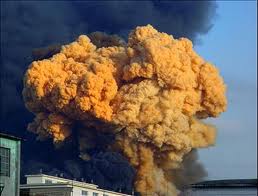
- Carbon Monoxide: This is a colorless and odorless toxic gas that becomes produced by the incomplete combustion of carbon fuels.
- The burning of fossil fuels: This produces roughly three quarters of all man made carbon dioxide emissions. Because Carbon Dioxide cannot be absorbed by our surrounding environment, the addition of carbon based fuel emissions is compounding the problem of too much CO2 being released in the atmosphere.
- Sulfur Oxides: These poisonous gases are a result of fuel combustion, and negatively affect human health, along with that of the environment. SO2 is the main cause of acid rain.

- Particulate Matter: this is one of the more significant human health hazards, because it penetrates lung tissue and can consequently lead to cancerous agents in the lungs, or possibly even Tuberculosis.
- Volatile Organic Compounds: If you have been following the Ecolink blogs, then you have probably seen VOCs mentioned more than once. This is a term that refers to the volatility of organic compounds from manufacturing operations and processes that escape into the air in a gaseous state. VOCs create both hazardous indoor and outdoor toxins.
Several other types of industrial pollutants exist, but the ones listed above are the most abundant. Fortunately, industrial businesses have companies like Ecolink at their disposal, which researches, defines, and makes available the names of harmful industrial pollutions, and the reasons why these pollutants need to be eliminated. Ecolink also provides ideas and methods for transitioning to eco friendly, green alternative chemical solutions – from which all industrial companies can benefit, saving time, energy, money and the environment.














